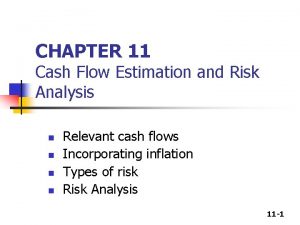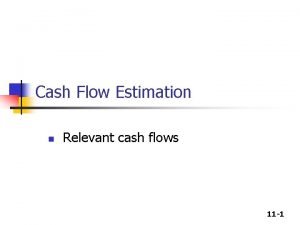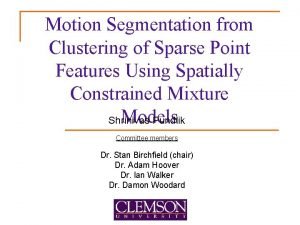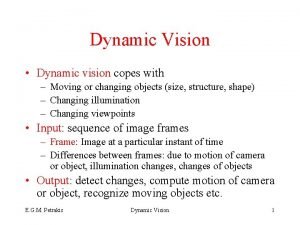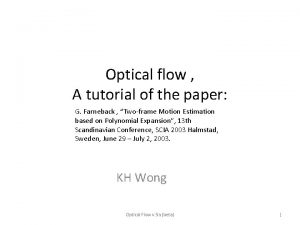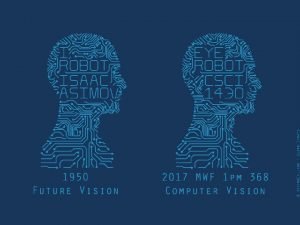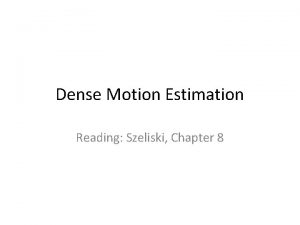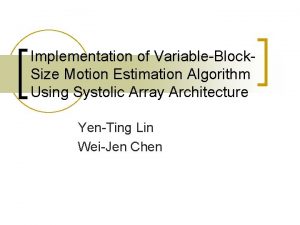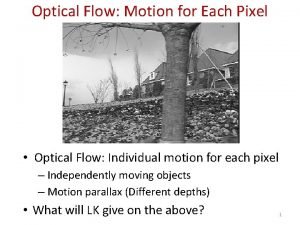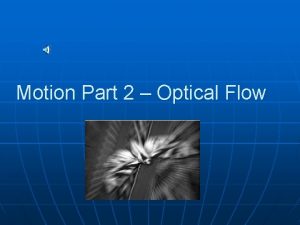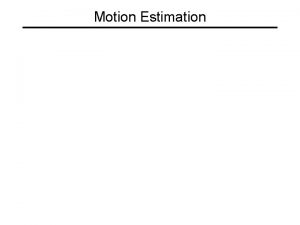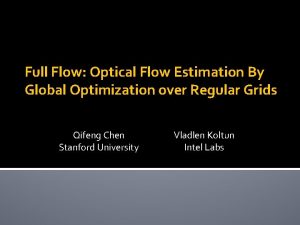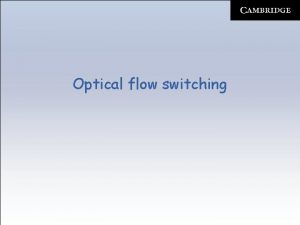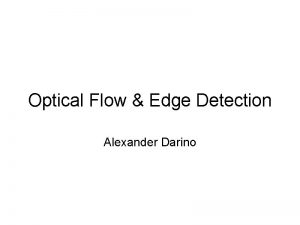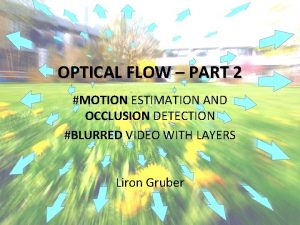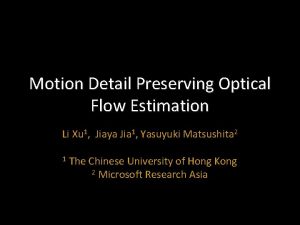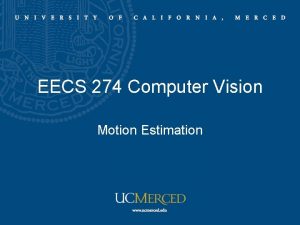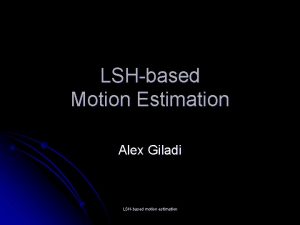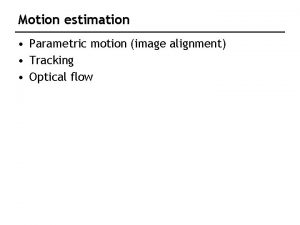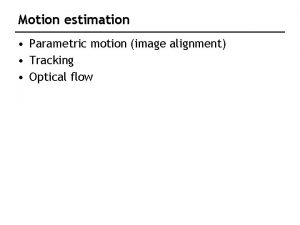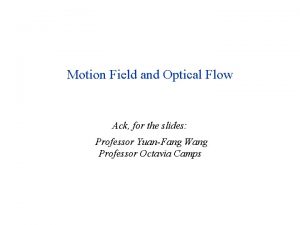Motion Optical Flow II Estimation of Motion Field



















- Slides: 19

Motion / Optical Flow II Estimation of Motion Field Avneesh Sud Computer Vision - Fall 2001

Outline • Motion Field & Optical Flow • Constraints • Methods of Estimating Motion Field – Differential Techniques • Least Squares • Horn-Schunck Algorithm • Comments • Results by Miguel Computer Vision - Fall 2001 2

Motion Field • 2 -D projection of velocities of the image points, induced by the relative motion between camera and scene – Not directly measurable from an image Computer Vision - Fall 2001 3

Optical Flow • A vector field subject to Image Brightness Constancy Equation (IBCE) • Apparent motion of the image brightness pattern Computer Vision - Fall 2001 4

Optical Flow Vs. Motion Field • Optical flow does not always correspond to motion field • Optical flow is an approximation of the motion field. The error is small at points with high spatial gradient under some simplifying assumptions (Trucco p 195) Computer Vision - Fall 2001 5

Ambiguity in Local Optical Flow • Correspondence between points on isobrightness contours? • A constant patch of uniform brightness – multiple optical flow solutions – Use additional constraints ! Computer Vision - Fall 2001 6

IBCE Revisited Assume the image intensity of each visible scene point is unchanging over time Also known as the Horn and Schunck optical flow constraint equation Computer Vision - Fall 2001 7

Aperture Problem • Constraint corresponds to a line in velocity space v Constraint line (Ex, Ey) u • Given local info, can determine component of optical flow vector only in direction of brightness gradient Computer Vision - Fall 2001 8

Estimating Motion Field • Differential techniques : based on spatial & temporal variations of the image at all pixels • Matching (feature-based) techniques : rely on special image points (features) and track them through frames Computer Vision - Fall 2001 9

Differential Techniques : Least Squares • Optical Flow Algorithm (Trucco, p 196) – For each pixel p • Must satisfy ( E)v + Et = 0 • Assumption : This equation holds in the neighborhood of p with constant v • Write this equation for a small (typically 5 x 5) patch centered at p • Then we find least square fit of v - this is the calculated optical flow for pixel p Computer Vision - Fall 2001 10

Least Squares : Assumptions • Assumed that ICBE holds in the neighborhood of p with constant v • In case of rigid motion, the motion field of a moving plane is a quadratic polynomial in the coordinates (x, y, f) of the image points. (Trucco p 187) – Therefore, if the object is smooth & rigid, we can assume the motion field varies smoothly Computer Vision - Fall 2001 11

Differential Techniques : Horn. Schunck Algorithm • Optical flow constraint equation gives the component in direction of brightness gradient : • Additional Constraint : smoothness of optical flow! Neighboring surface points of a rigid object have approximately same local displacement vectors Computer Vision - Fall 2001 12

Horn-Schunck Algorithm • Two criteria: – Optical flow is smooth, Fs(u, v) – Small error in optical flow constraint equation, Fh(u, v) • Minimize a combined error functional Fc(u, v) = Fs(u, v) + λ Fh(u, v) λ is a weighting parameter • Variation calculus gives a pair of second order differential equations that can be solved iteratively Computer Vision - Fall 2001 13

Horn-Schunck Algorithm : Discrete Case • Derivatives (and error functionals) are approximated by difference operators • Leads to an iterative solution: Computer Vision - Fall 2001 14

Intuition of the Iterative Scheme v (E , E ) x y Constraint line (u, v) u The new value of (u, v) at a point is equal to the average of surrounding values minus an adjustment in the direction of the brightness gradient Computer Vision - Fall 2001 15

Horn-Schunck Algorithm begin for j : = 1 to N do for I: = 1 to M do begin calculate the values Ex(i, j, t), Ey(i, j, t) and Et(i, j, t) using a selected approx formula initialize the values u(I, j) and v(i, j) to zero end {for} choose a suitable weighting value choose a suitable number n 0 1 of iterations n : = 1 while n n 0 do begin for j : = 1 to N do for i : = 1 to M do begin compute u, v, update u(i, j), v(i, j) end {for} n : = n + 1 end {while} end Computer Vision - Fall 2001 17

Comments • There are reliable methods for estimating optical flow. • Optical flow is a vector field, from which the motion field can be estimated under certain conditions. • Horn – Schunk Algorithm as presented does not handle discontinuities (silhouettes) well. • Some real-world results! Computer Vision - Fall 2001 18

References • Introductory Techniques for 3 -D Computer Vision, Emanuele Trucco and Allessandro Verri, Prentice Hall, 1998. Chapter 8 • Robot Vision, B. K. P. Horn, MIT Press 1986. Chapter 12 • Computer Vision: Three-Dimensional Data from Images, Reinhard Klette, Karsten Schluns, Andreas Koschan, Springer 1998. Topic 5. 2 Computer Vision - Fall 2001 19

References • Mike. Talk: A Talking Facial Display Based on Morphing Visemes, Tony Ezzat and Tomaso Poggio, Proceedings of the Computer Animation Conference Philadelphia, PA, June 1998 • Optical Flow - CVonline: Motion and Time Sequence Analysis (http: //www. dai. ed. ac. uk/CVonline/motion. htm) Computer Vision - Fall 2001 20
 Sewage and storm water estimation
Sewage and storm water estimation Cash flow estimation and risk analysis
Cash flow estimation and risk analysis Relevant cash flows
Relevant cash flows Horn schunck optical flow
Horn schunck optical flow Horn schunck optical flow
Horn schunck optical flow Optical flow tutorial
Optical flow tutorial Optical flow equation
Optical flow equation Dense motion estimation
Dense motion estimation Motion estimation algorithms
Motion estimation algorithms Magnitude of magnetic force
Magnitude of magnetic force Field dependent vs field independent
Field dependent vs field independent Field dependent vs field independent
Field dependent vs field independent Distinguish between magnetic and nonmagnetic materials
Distinguish between magnetic and nonmagnetic materials Waveguide cutoff frequency
Waveguide cutoff frequency Database field types and field properties
Database field types and field properties Field dependent definition
Field dependent definition Difference between electric field and magnetic field
Difference between electric field and magnetic field Oxygen entrainment ratio
Oxygen entrainment ratio Trach collar oxygen flow rates
Trach collar oxygen flow rates High flow versus low flow oxygen
High flow versus low flow oxygen

